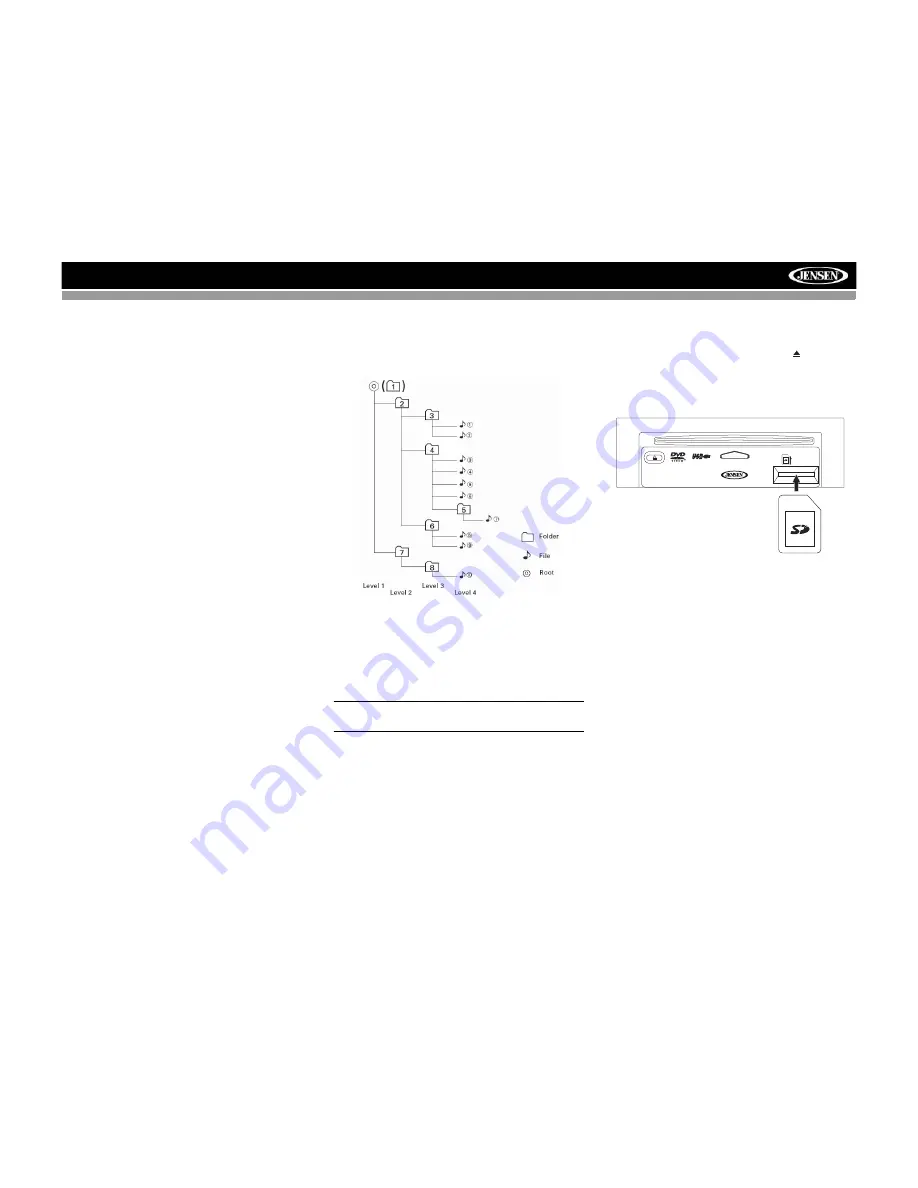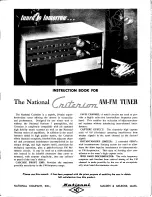
14
VM9223
MP3/WMA OPERATION
Instructions for TFT control and Insert/Eject are the same for
DVD and MP3 operation. Please see the DVD/Disc Video
Operation section for information about these topics.
Media and File Requirements
This player allows you to play back MP3 and WMA files
recorded onto CD-R/RWs, DVD+R/RWs, and DVD-R/RWs.
For CD-RW discs, please make sure it is formatted using the
full method and not the quick method to prevent illegal disc
operation. This unit will also display photos.
Up to 1500 songs/files can be burned onto a disc for a MEGA
DVD music mix. Do not exceed this number of songs/files or
disc readability problems may occur.
MP3 Format Compatibility
The file naming formats listed below are compatible with this
unit:
•
ISO 9660 – file name: 12 characters, file extension: 3
characters
•
ISO 9660 – file name: 31 characters, file extension: 3
characters
•
Joliet – 64 characters
If the file or folder name does not conform to ISO 9660 file
system standards, it may not be displayed or played back
correctly. Use the following settings when compressing audio
data for your MP3 disc:
•
Transfer Bit Rate: 128kbps
•
Sampling Frequency: 48kHz
When recording MP3 up to the maximum disc capacity,
disable additional writing. For recording on an empty disc up
to maximum disc capacity, use the "Disc at once" setting.
MP3 Playing Order
When selected for play, files and folders are accessed in the
order they were written by the CD writer. As a result, the
order in which they are expected to be played may not match
the order in which they are actually played. You may be able
to set the order in which MP3/WMA files are to be played by
writing them onto a medium such as a CD-R with their file
names beginning with play sequence numbers such as "01"
to "99".
For example, a medium with the following folder/file hierarchy
is subject to Folder Search, File Search or Folder Select, as
shown below.
The VM9223 player will only recognize three folder levels and
does not display folders containing only other folders. In the
example above, the unit will display folders 3, 4, 6, and 8, but
not 2 and 7 since they do not contain any tracks directly.
Folder 5 is not recognized at all since it is at the fourth level.
Inserting a USB Device
NOTE: The USB port will recognize most USB flash
memory devices.
1.
Locate the USB connector. The USB pigtail on the back
of the unit should be brought around to an accessible
place during installation.
2.
Insert the USB device into the USB connector. The unit
will read the audio/video files on the USB device
automatically.
To remove the USB device, press the
SRC
button (6) to
switch to another mode and then remove the USB device
from the USB connector.
Loading an SD Card
To Insert an SD card, you must first press the /
EJECT
button on the control panel (5) or remote control (23) to
reveal the SD card slot (14). Insert the SD card into the card
slot and the unit will read the media files on the card
automatically.
To remove the card, first press the
SRC
button (6) to switch to
another mode and stop SD playback. Push in and release to
pop the card out. Grasp the SD card and pull it straight out.
Most cards have a thin recess that helps with removal.
LABEL SIDE UP
DISC IN
EJECT
















































